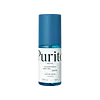What's inside
What's inside
 Key Ingredients
Key Ingredients

 Benefits
Benefits

 Concerns
Concerns

No concerns
 Ingredients Side-by-side
Ingredients Side-by-side

Sea Water 66.01%
HumectantButylene Glycol
HumectantPropanediol
SolventGlycerin
HumectantWater
Skin Conditioning1,2-Hexanediol
Skin ConditioningCaprylic/Capric Triglyceride
MaskingHydrolyzed Glycosaminoglycans
HumectantBetaine
HumectantEctoin
Skin ConditioningTremella Fuciformis Extract
HumectantTremella Fuciformis Polysaccharide
Emulsion StabilisingSalicornia Herbacea Extract
Skin ConditioningLaminaria Japonica Extract
Skin ProtectingCaulerpa Lentillifera Extract
Acetyl Hexapeptide-8
HumectantCopper Tripeptide-1
Skin ConditioningAcrylates/C10-30 Alkyl Acrylate Crosspolymer
Emulsion StabilisingXanthan Gum
EmulsifyingAllantoin
Skin ConditioningAdenosine
Skin ConditioningTromethamine
BufferingDisodium EDTA
Ethylhexylglycerin
Skin ConditioningSea Water 66.01%, Butylene Glycol, Propanediol, Glycerin, Water, 1,2-Hexanediol, Caprylic/Capric Triglyceride, Hydrolyzed Glycosaminoglycans, Betaine, Ectoin, Tremella Fuciformis Extract, Tremella Fuciformis Polysaccharide, Salicornia Herbacea Extract, Laminaria Japonica Extract, Caulerpa Lentillifera Extract, Acetyl Hexapeptide-8, Copper Tripeptide-1, Acrylates/C10-30 Alkyl Acrylate Crosspolymer, Xanthan Gum, Allantoin, Adenosine, Tromethamine, Disodium EDTA, Ethylhexylglycerin
Water
Skin ConditioningPropanediol
SolventGlycerin
HumectantPolyglycerin-3
HumectantGlyceryl Polymethacrylate
1,2-Hexanediol
Skin ConditioningPEG-8
HumectantPEG-7 Glyceryl Cocoate
EmulsifyingPolysorbate 20
EmulsifyingAcrylates/C10-30 Alkyl Acrylate Crosspolymer
Emulsion StabilisingHydroxyethyl Acrylate/Sodium Acryloyldimethyl Taurate Copolymer
Emulsion StabilisingTromethamine
BufferingGlyceryl Caprylate
EmollientMannitol
HumectantHydrolyzed Collagen
EmollientParfum
MaskingEthylhexylglycerin
Skin ConditioningAdenosine
Skin ConditioningButylene Glycol
HumectantDisodium EDTA
Sorbitan Isostearate
EmulsifyingMethyl Methacrylate/Acrylonitrile Copolymer
CI 77480
Cosmetic ColorantAureobasidium Pullulans Ferment
Skin ConditioningResveratrol
AntioxidantMagnesium Sulfate
Calcium Chloride
AstringentAcetyl Tetrapeptide-11
Skin ConditioningManganese Sulfate
Skin ConditioningTocopherol
AntioxidantChenopodium Quinoa Seed Extract
Skin ConditioningZinc Sulfate
AntimicrobialAscorbyl Glucoside
AntioxidantWater, Propanediol, Glycerin, Polyglycerin-3, Glyceryl Polymethacrylate, 1,2-Hexanediol, PEG-8, PEG-7 Glyceryl Cocoate, Polysorbate 20, Acrylates/C10-30 Alkyl Acrylate Crosspolymer, Hydroxyethyl Acrylate/Sodium Acryloyldimethyl Taurate Copolymer, Tromethamine, Glyceryl Caprylate, Mannitol, Hydrolyzed Collagen, Parfum, Ethylhexylglycerin, Adenosine, Butylene Glycol, Disodium EDTA, Sorbitan Isostearate, Methyl Methacrylate/Acrylonitrile Copolymer, CI 77480, Aureobasidium Pullulans Ferment, Resveratrol, Magnesium Sulfate, Calcium Chloride, Acetyl Tetrapeptide-11, Manganese Sulfate, Tocopherol, Chenopodium Quinoa Seed Extract, Zinc Sulfate, Ascorbyl Glucoside
 Reviews
Reviews

Ingredients Explained
These ingredients are found in both products.
Ingredients higher up in an ingredient list are typically present in a larger amount.
1,2-Hexanediol is a synthetic liquid and another multi-functional powerhouse.
It is a:
- Humectant, drawing moisture into the skin
- Emollient, helping to soften skin
- Solvent, dispersing and stabilizing formulas
- Preservative booster, enhancing the antimicrobial activity of other preservatives
Acrylates/C10-30 Alkyl Acrylate Crosspolymer is a synthetic polymer. It is used to thicken and improve the texture of products. Due to its properties, it can prevent water and oil ingredients from separating.
Adenosine is in every living organism. It is one of four components in nucleic acids that helps store our DNA.
Adenosine has many benefits when used. These benefits include hydrating the skin, smoothing skin, and reducing wrinkles. Once applied, adenosine increases collagen production. It also helps with improving firmness and tissue repair.
Studies have found adenosine may also help with wound healing.
In skincare products, Adenosine is usually derived from yeast.
Learn more about AdenosineButylene Glycol (or BG) is used within cosmetic products for a few different reasons:
Overall, Butylene Glycol is a safe and well-rounded ingredient that works well with other ingredients.
Though this ingredient works well with most skin types, some people with sensitive skin may experience a reaction such as allergic rashes, closed comedones, or itchiness.
Learn more about Butylene GlycolDisodium EDTA plays a role in making products more stable by aiding other preservatives.
It is a chelating agent, meaning it neutralizes metal ions that may be found in a product.
Disodium EDTA is a salt of edetic acid and is found to be safe in cosmetic ingredients.
Learn more about Disodium EDTAEthylhexylglycerin (we can't pronounce this either) is commonly used as a preservative and skin softener. It is derived from glyceryl.
You might see Ethylhexylglycerin often paired with other preservatives such as phenoxyethanol. Ethylhexylglycerin has been found to increase the effectiveness of these other preservatives.
Glycerin is already naturally found in your skin. It helps moisturize and protect your skin.
A study from 2016 found glycerin to be more effective as a humectant than AHAs and hyaluronic acid.
As a humectant, it helps the skin stay hydrated by pulling moisture to your skin. The low molecular weight of glycerin allows it to pull moisture into the deeper layers of your skin.
Hydrated skin improves your skin barrier; Your skin barrier helps protect against irritants and bacteria.
Glycerin has also been found to have antimicrobial and antiviral properties. Due to these properties, glycerin is often used in wound and burn treatments.
In cosmetics, glycerin is usually derived from plants such as soybean or palm. However, it can also be sourced from animals, such as tallow or animal fat.
This ingredient is organic, colorless, odorless, and non-toxic.
Glycerin is the name for this ingredient in American English. British English uses Glycerol/Glycerine.
Learn more about GlycerinPropanediol is an all-star ingredient. It softens, hydrates, and smooths the skin.
It’s often used to:
Propanediol is not likely to cause sensitivity and considered safe to use. It is derived from corn or petroleum with a clear color and no scent.
Learn more about PropanediolTromethamine helps balance the pH and improve the texture of a product. It is synthetically created.
As an emulsifier, Tromethamine prevents oil and water ingredients from separating. This helps stabilize the product and elongate a product's shelf life. Tromethamine also makes a product thicker.
Tromethamine helps balance the pH level of a product. Normal pH level of skin is slightly acidic (~4.75-5.5). The acidity of our skin is maintained by our glands and skin biome. Being slightly acidic allows our skin to create an "acid mantle". This acid mantle is a thin barrier that protects our skin from bacteria and contaminants.
Oral Tromethanmine is an anti-inflammatory drug but plays the role of masking, adding fragrance, and/or balancing pH in skincare.
1,3-Propanediol, 2-amino-2-(hydroxymethyl)-
Learn more about TromethamineWater. It's the most common cosmetic ingredient of all. You'll usually see it at the top of ingredient lists, meaning that it makes up the largest part of the product.
So why is it so popular? Water most often acts as a solvent - this means that it helps dissolve other ingredients into the formulation.
You'll also recognize water as that liquid we all need to stay alive. If you see this, drink a glass of water. Stay hydrated!
Learn more about Water